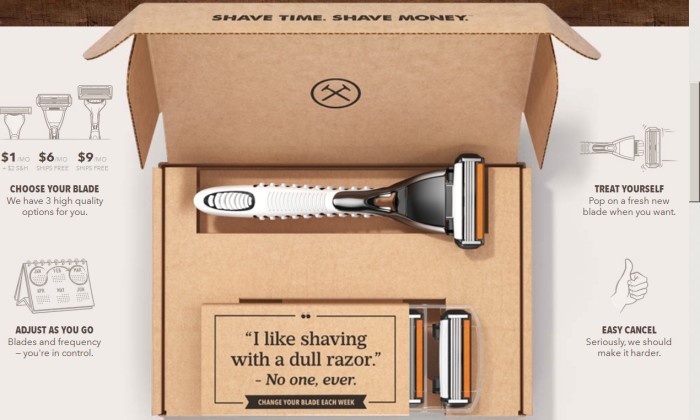Innovation's David vs Goliath
Disruptive newcomers are threatening incumbents
Innovation. Disruption. Some may think these terms are interchangeable. For instance, if you were to think of a disruptor, odds are you’ll probably think of an organization like Tesla. While this is a hugely successful business, Tesla hasn’t really disrupted the automotive industry. The business model is essentially the same as any other automotive business; the vehicle has its own unique bells and whistles, but it’s still the same body shape and design as any other sedan. A Tesla does, however, have a rather unique power source for a vehicle. Disruptive? Not entirely. Innovative? Absolutely!
Disruptors typically approach their business with a wildly different business model than an incumbent would. Consider Dollar Shave Club; for a dollar a month, the Dollar Shave Club would send high-quality razors straight to your door. Did they reinvent the way men groom themselves? No. Did they redesign the look, function, and feel of a razor? They didn’t have to. The friction that gave birth to Dollar Shave Club was how to mitigate the hassle of buying razorblades every month, completely changing the way many men think about personal care. And at a dollar a month, it’s exceedingly appealing to previously excluded segments of the market. Disruption at its finest.

These market shifts can mainly be attributed to the fact that entry barriers are lowering; production outsourcing opportunities and new distribution channels allow a market entrance at small volumes and low(er) cost. These low entry barriers create an environment where newcomers launch innovations at a rapid pace, established players and their more process-driven innovation flows have a hard time keeping up.
Not surprisingly, many established organizations experience a sort of innovation envy towards these successful newcomers. For many big organizations, the question lies in how they can keep up. How can they leap in and take their stake in innovation?
To bypass their over-processed innovation flow and take a piece of the disruptive innovation pie, it is not uncommon for companies to buy these smaller players as a means to integrate innovation and grow their portfolio (incidentally, Unilever bought Dollar Shave Club after only 4 years in operation, for a cool $1 billion). Yet, as attractive as it may sound, buying innovations or innovative start-ups is not an option for everyone. Not only does it imply a lot of processes and large financial investments, not everything is for sale (or should be). Although these innovation buy-ins might contribute to positive results on one’s bottom-line, far too often it remains a separate construction where the innovation is done in isolation and not immersed in the business. These sidetracks often do not change the actual innovation environment, process, or culture. Simply buying a company does not automatically imply becoming that company, or inheriting its innovation culture and practices.
To be more like these disruptive innovators, one needs to understand what factors lie at the basis and deeply embed these in the current processes and innovation routines. What drives these successful entrepreneurs? What are the common denominators to their success and what can we learn from them? The analysis of a multitude of successful start-up innovations helped us identify three key characteristics amongst successful innovators: friction, passion, and pilot.

The 3 DNA characteristics incumbents can infuse to catch up with disruptors
- Find that core friction
Successful innovation starts from addressing an unmet need – this is where the entire process starts: understanding the tensions and unmet needs, those unique insights which drives the solution creation process.
- Execute with passion
After the friction comes the drive to ideate and create, where an idea is nurtured, fine-tuned and taken forward. While these entrepreneurs are often also the idea initiators, they understand the value of surrounding themselves with passionate people to help shape their idea.
- Pilot and tweak accordingly
Successful disruptors have a launch & learn attitude, where they don’t consider the market launch as the finishing line, but rather as the start for optimizing and growing their product or service. The go-to-market is part of the innovation process, where one pilots, optimizes, and learns from market feedback along the way.
Eager for more? Get your download of our Innovation Envy bookzine and discover more insights on what established innovators can learn from successful disruptors.




